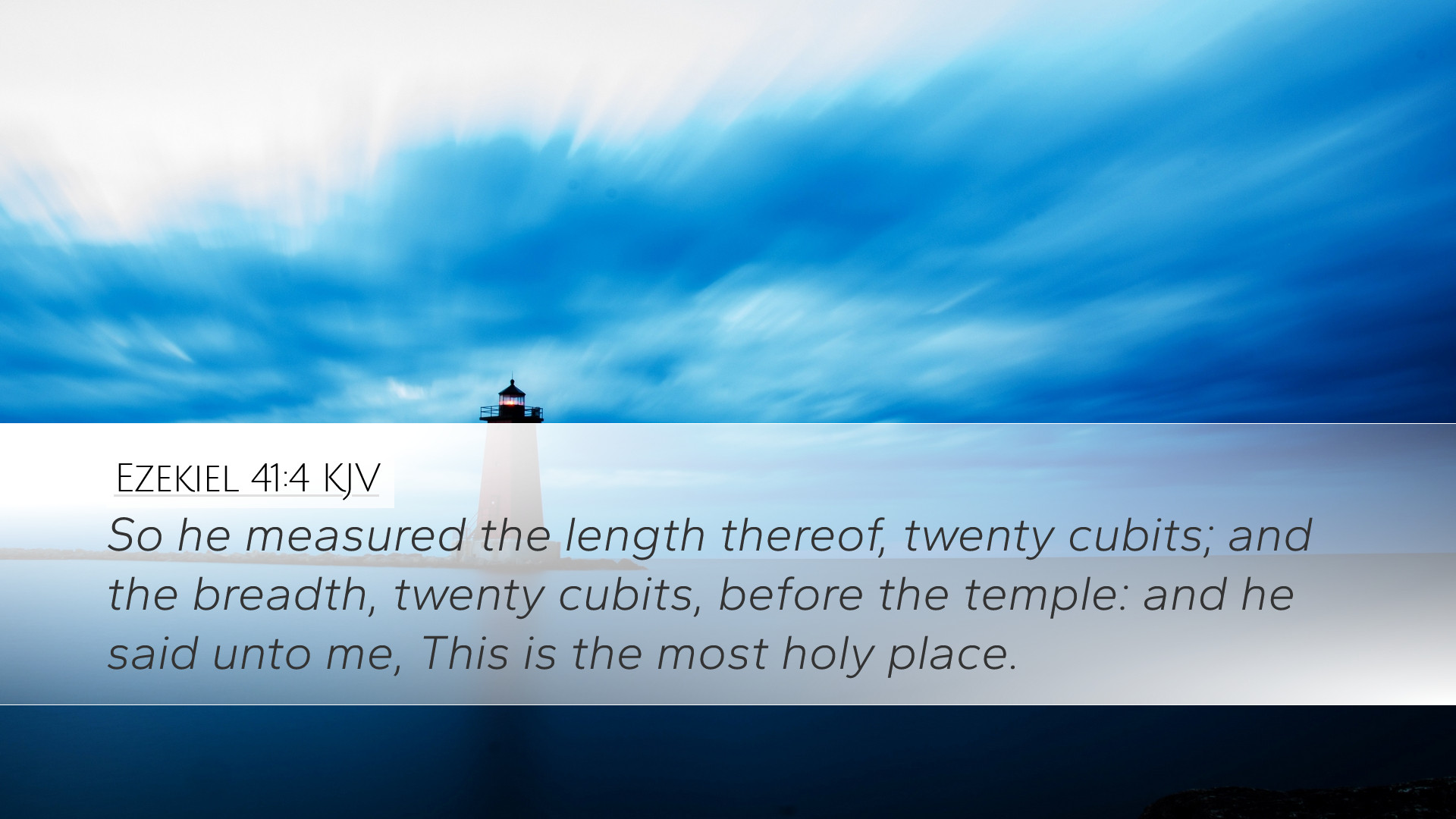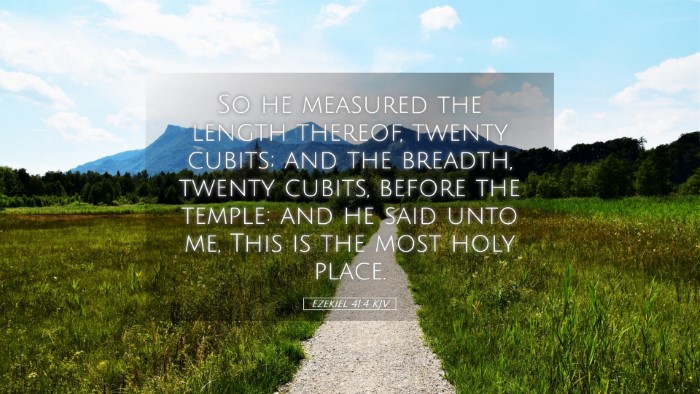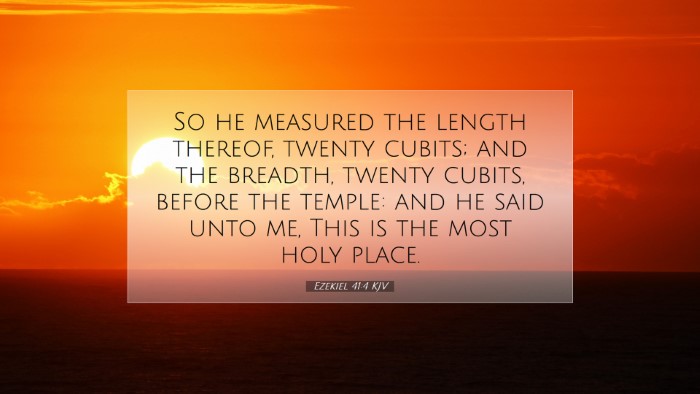Ezekiel 41:4 Commentary
Verse: Ezekiel 41:4 - "And he measured the length thereof twenty cubits, and the breadth thereof twenty cubits, before the temple: and he said unto me, This is the most holy place."
Introduction
The book of Ezekiel is rich with prophetic visions and detailed descriptions of the temple, a central theme that requires contemplation to fully grasp its implications for worship and God’s presence among His people. In Ezekiel 41:4, the prophet is shown the dimensions of the most holy place, a critical aspect that signifies its importance. This commentary seeks to synthesize insights from noteworthy public domain commentaries to provide a thorough understanding of this passage.
Historical Context
The context of Ezekiel’s writing is essential to understanding this verse. Written during the Babylonian exile, Ezekiel’s visions offer hope and restoration to a people in despair. The temple represents a significant aspect of Jewish identity and the presence of God. Understanding the physical dimensions and design of the temple helps scholars and theologians to appreciate the sacredness of worship practices in ancient Israel.
Significance of Measurements
According to Matthew Henry, the meticulous details of the temple’s measurements signify the perfection and holiness of God’s dwelling place. The use of cubits in measurements underscores the intentional design of the temple. The exactness of the dimensions reflects the orderliness of God’s character, inviting believers to recognize the sanctity and precision in all matters of faith.
The Most Holy Place
This verse identifies the area described as "the most holy place," which is a significant theological concept. Albert Barnes explains that this area, also known as the Holy of Holies, was where the presence of God dwelled between the cherubim. Its sacredness is paramount; only the high priest could enter this space, and only once a year on the Day of Atonement (Yom Kippur). This exclusivity exemplifies God’s holiness and the necessity for atonement in approaching Him.
The Dimensions Explained
The measurements given in the verse signify a space that is intended to be distinctly separate from other areas of the temple. Adam Clarke emphasizes the importance of this distinction by noting that it symbolizes the ultimate holiness and separation of God from sin. The dimensions (twenty cubits by twenty cubits) create a square that signifies stability and completeness in God’s presence.
Theological Implications
Understanding this verse also invites exploration into various theological implications. The "most holy place" serves as a reminder of the sacredness required in the worship of God.
- Separation: The dimensions signify a physical and spiritual separation from the common to the sacred.
- Access to God: It points to the understanding that access to God is limited and requires preparation and purification.
- Foreshadowing Christ: The Holy of Holies can be seen as a precursor to the ultimate reverence shown in the New Testament as access to God is made available through Jesus Christ.
Exegesis and Application
When interpreting Ezekiel 41:4, exegesis plays a crucial role in derailing layers of meaning. Matthew Henry draws attention to the need for spiritual vigilance and holiness among God’s people, as the temple serves as a symbol of God’s presence in their midst. This excerpt from Ezekiel challenges modern readers to seek a deeper relationship with God in their worship.
Conclusion
Ezekiel 41:4 offers rich insights into the nature of God’s dwelling among His people. Through the dimensions and significance of the most holy place, we encapsulate vital truths about holiness, divine order, and righteous worship. For pastors and theologians, this verse could serve as a focal point to emphasize God’s holiness in their teachings and remind congregation members of the importance of reverence in worship. By combining insights from Albert Barnes, Adam Clarke, and Matthew Henry, we come forth with a holistic understanding applicable to both theological discourse and personal spirituality.


